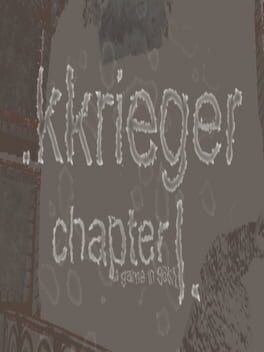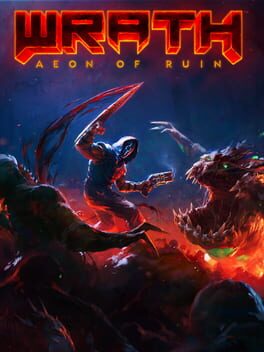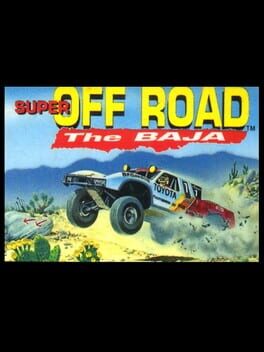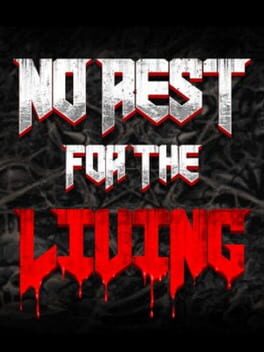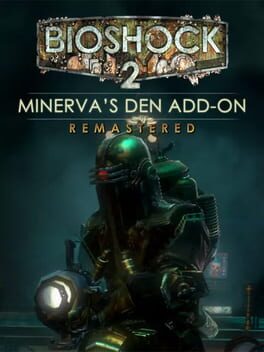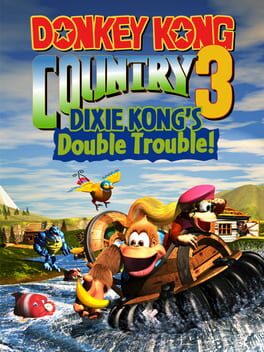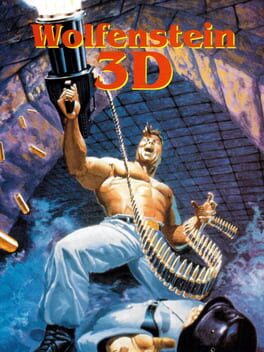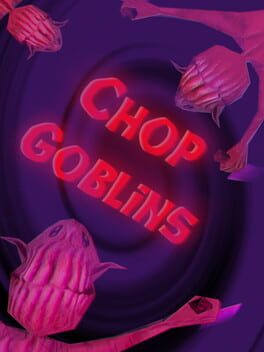wwtippy
2004
2018
DUSK is the Uncharted 2 of Quake-likes.
As the enchanting low-poly video game locales give way to demonic machinery, Escheresque mansions, extraplanar cultic horrors, and what I can only describe as a tribute to Minecraft's "The Dropper", DUSK comes to resemble an endearing action-horror parody of itself. The imaginative and increasingly elaborate set pieces bring to mind modern blockbusters. Contrary to my expectations going in, DUSK did not make me yearn for an earlier time in game development history, but rather led me to contemplate how far the medium has come in terms of conveying a sense of place.
DUSK is purportedly a spiritual sequel to the first Quake, and we see this reflected in its visual design and themes. A common praise given to Quake is that it has "good atmosphere" apropos of its charming earth-tone graphics and ambient sound design. I implore those who espouse this to describe to me a single location in that game in concrete terms and without using the word "Lovecraftian." Describe to me what a given level is supposed to be, where you the character are occupying, without referring to the name on the level telling you what it is supposed to be. What I am getting at is: Quake has no sense of place. It is DOOM's abstract representation of Hell, but in 3D and brown. Quake is closer to a video game tone poem about Lovecraftian horror than anything resembling a horror story, and DUSK is the perfect counterpoint to make this case.
I was surprised to learn that David Szymanski's least favorite id Software game is Quake II, when I found DUSK to be FAR more similar to that game. I love them for very similar reasons: the world, the atmosphere, the singular looming threat that the protagonist vies against. Anyway, great game, go play it.
As the enchanting low-poly video game locales give way to demonic machinery, Escheresque mansions, extraplanar cultic horrors, and what I can only describe as a tribute to Minecraft's "The Dropper", DUSK comes to resemble an endearing action-horror parody of itself. The imaginative and increasingly elaborate set pieces bring to mind modern blockbusters. Contrary to my expectations going in, DUSK did not make me yearn for an earlier time in game development history, but rather led me to contemplate how far the medium has come in terms of conveying a sense of place.
DUSK is purportedly a spiritual sequel to the first Quake, and we see this reflected in its visual design and themes. A common praise given to Quake is that it has "good atmosphere" apropos of its charming earth-tone graphics and ambient sound design. I implore those who espouse this to describe to me a single location in that game in concrete terms and without using the word "Lovecraftian." Describe to me what a given level is supposed to be, where you the character are occupying, without referring to the name on the level telling you what it is supposed to be. What I am getting at is: Quake has no sense of place. It is DOOM's abstract representation of Hell, but in 3D and brown. Quake is closer to a video game tone poem about Lovecraftian horror than anything resembling a horror story, and DUSK is the perfect counterpoint to make this case.
I was surprised to learn that David Szymanski's least favorite id Software game is Quake II, when I found DUSK to be FAR more similar to that game. I love them for very similar reasons: the world, the atmosphere, the singular looming threat that the protagonist vies against. Anyway, great game, go play it.
2019
I review Wrath: Aeon of Ruin as an individual enamored with video games. In recent times I am especially drawn to video games of the “boomer shooter” archetype—a selection of games centered around fast-paced, point-and-click FPS action that is in the midst of a bonafide golden age—but to speak broadly I am a student of all video games and video game design. I am an avid appreciator of the tricks that game designers use to pull the player into their world, to invest them, to create feeling and tone and palpability. We each play games for different reasons, and we play different games for different reasons. Those who share this mindset will find Wrath to be a novel and surprising video game. Wrath: Aeon of Ruin is a child of the aforementioned boomer shooter craze: a labor of love that, after the release of its sizable demo levels in 2019, brewed and gestated for five long years in development. Meanwhile, the burgeoning indie scene spat out gem after lauded gem: DUSK, Prodeus, Amid Evil, Ultrakill, Project Warlock, Postal: Brain Damaged, Nightdive’s remasters, Hedon: Bloodrite, Ion Fury, the last of which was stated to be main competition to Wrath by Wrath’s developers, before their own game’s numerable delays.
Understand first the context of Wrath’s release. In 1996, id Software, the developers of the foundational Wolfenstein 3-D and DOOM first-person shooter video games, released a seminal masterwork rivaling even these: Quake. Quake, with its at-once iconic Lovecraftian atmosphere, labyrinthian 3D DOOM-core action-shooting gauntlets (with freshly-minted room-on-room level design), moody dark-ambient Trent Reznor soundtrack, and massive multiplayer base, took the PC gaming scene by storm. The game was influential on a level that is hard to fathom in today’s industry; modern releases such as Counter-Strike 2, Apex Legends, and Call of Duty: Black Ops 4 still have little pieces of Quake code bouncing around in their game engines (for a fun rabbit hole, search up “Quake family tree.svg”). As for Wrath: Aeon of Ruin, it has more than a little: Wrath is the first game to be released in almost 20 years that is built entirely in Quake’s engine. While computing power, development tools, and general design knowledge have all marched dutifully on since 1996, the very same internals power this 2024 release.
Using the Quake engine to develop a game with modern sensibilities is an unequivocal restraint, even as those same sensibilities seem to be trending back toward the past. That Wrath, in the state of its release, works at all is a technical achievement, let alone that it works pretty much flawlessly. I experienced no bugs graphical or otherwise during my playthrough; it is clear that much of the lengthy development was spent achieving a level of polish rivaling not only Wrath’s inspirations, but its contemporaries as well. There are a bevy of graphical options such that you can essentially paint the game—to your liking—as a 90s-era Quake sequel or a modernized tribute. In one forum thread asking about players’ preferred settings, developer KillPixel Studios slyly responded “I use ReSade [sic] and HD texture packs because the pixels are old and ugly :(“
KillPixel’s—and more broadly, the indie boomer shooter scene’s—infatuation with both the look and feel of the Quake games to the point of hero worship is well-documented. 3D Realms, Wrath’s publisher, brought onto the project a number of Quake modders, mappers, and modelers familiar with both that game and its development tools. The result is a game that, to quote Jeremiah ‘KillPixel’ Fox, “draws heavily from the combat of DOOM, the interactivity of Duke Nukem 3D, the spatial awareness of Quake, and the darker theme of Hexen.” And indeed, from the crunchy pixels to the radical guns to the demonic enemy hordes (to the framerate sophomorically capped at 666) and beyond, Wrath bleeds its 90s influence right through the computer monitor.
But Wrath is far from a game stuck in the past. The array of ridiculous weapons, alternate fire modes, trapped item pickups, and entire hordes spawning from thin air all call to mind 2000s horde shooter offerings such as Serious Sam and Painkiller. Its rogue’s gallery of bold, identifiable foes and entirely avoidable damage reflect the more modern design trends codified by heavy-hitters like DOOM Eternal and even Ultrakill. These deft design decisions paint a picture of a team of designers that has kept a close pulse on their target market over the course of their “development hell.” But, profoundly, Wrath’s unspoken biggest influence isn’t a ‘90s action game. It isn’t even a first-person shooter. It’s Dark Souls.
There are two things that anybody familiar with modern boomer shooter trappings will notice immediately about Wrath: Aeon of Ruin: it’s lack of a quicksave feature, and its ridiculously, maximalistically long levels. These two elements have drawn the ire of players and critics alike both before and after the game’s release. Terms like “exhausting”, “tedious”, even “long-winded” have been thrown around regarding the pacing of the game. In my own original review, penned in frustration after a casual three-hour opening session with the game ended in having completed—by the skin of my teeth—about two-and-a-half levels, I wrote that “I love this game in the way that a parent unconditionally loves their disappointing child.” The one-two punch of navigating a seemingly-endless labyrinth, AND each death costing valuable minutes of game-time now spent retreading the same ground and fighting the same battles, is enough to make every death brutal. For those playing the game like Quake, having played Quake, and expecting 2024’s Quake II 2 in the Quake engine, these deaths throw water onto the sapling of exasperation that is planted as soon as you see the first level’s enemy count of 377 (for reference, the entire first episode of Quake, consisting of eight levels, has 354 enemies on normal difficulty).
When you start playing the game like Dark Souls (having played Dark Souls), it will click. Maybe immediately. In that game, progress is broken up by checkpoints known as bonfires. When you safely defeat (or run past) all of your enemies to the next bonfire, you can rest there, saving your progress to this physical location and restoring your character’s health. Wrath uses this system explicitly with its shrines—when you step under the canopy of one of these gazebo-like structures, your screen flashes, your health replenishes, and a save file is stamped to this spot in the level.
Wrath makes an addition to this system that is at once interesting and controversial: soul tethers. Essentially, the game has three ways to save: autosave (performed automatically by the game when entering a level via one of the portals in the hub—essentially as a failsafe), shrines (checkpoint/bonfire equivalent), and soul tethers (a somewhat-common consumable item that can be placed down to create a save, separate from that created by the shrine). By three ways to save, I mean to say three separate ways to save. These three save files exist for your game in tandem, allowing you to reload from the previous level entrance, the previous shrine visited, OR the previous soul tether placed, at any time. This is an intelligent design decision in that it prevents the player from “soft-locking” themselves completely in the way you might in a conventional boomer shooter: by exclusively using the quicksave feature until you trap yourself in an unwinnable scenario, hours removed from your previous “hard save.” In theory, it prevents locking yourself to a shrine as well; while these saves completely replenish your health it is still well possible to save at a shrine when starved of ammunition and surrounded unwinnably by a pack of enemies.
What this good stroke of design doesn’t diminish is the immediate frustration felt by myself and other connoissieurs of the genre at the prospect of being unable to quicksave. So what do the shrines and soul tethers accomplish? I mentioned before that video games use different “tricks” to invest the player. If you are willing to meet Wrath on its terms—which, so it happens, are also Dark Souls’s terms—you will find that its design lends itself to an experience you would be hard-pressed to find in an equivalent shooter game. At best, you would have to impose on yourself the level of tension and fear that Wrath: Aeon of Ruin integrally weaves with the language of its gameplay.
The enemies in this game aren’t just scary. They’re dangerous. They’re dangerous in a way that DOOM and Quake enemies are not, because they are every inch as threatening to your player character, but you, the player, have no option but to claw and scrape past them to your next checkpoint. They don’t just kill your character, they take your actual, real time away from you. The player’s inconvenience is a resource. The soul tether system, combined with the sheer length of each level’s layout, transforms Wrath from a standard fast-paced action game to a relentless gauntlet of endurance. Wrath’s foes are smartly designed with unique glowing colors and shapes and attack patterns—and you learn them. They become your enemies, in a way not usually denoted by the use of the term in gaming parlance. You learn to recognize their painstakingly-crafted, grotesque faces as though they are actors playing a role in each arena, in the same way that you would recognize Steve Buscemi’s face across different films.
Hidetaki Miyazaki, creator of the Souls franchise, once said about the perceived difficulty of his games: “I have no intention to make the game more difficult than other titles on purpose! It's just something required to make this style of game. . . .I've really been pursuing making games that give players a sense of accomplishment by overcoming tremendous odds.” He goes on to say that “having a certain level of difficulty adds value to those because they incentivise players to experiment more.” This is the heart of Wrath, the essence of its intention. The struggle that each location embodies is your struggle to grapple with. The shooting becomes personal.
The locations of the game are also your enemy. There are fifteen of them, three hub worlds with five levels apiece, and each with a little bonus boss encounter at the end. They are not only long and labyrinthine. They are unpredictable, in a way that Quake’s weren’t. Don’t be mistaken, there are still the hallmarks of level design that have come to define boomer shooters since the inception of the genre, especially the key-and-door rhythm of exploration and an over-reliance on corridors. But not all levels are built equally in Wrath. Some lean heavily into wide open spaces. Some are death traps to be defused with buttons and levers. Some have unique gimmicks. One memorable level in the second world is entirely nonlinear and requires the player to power a central obelisk by solving a platforming puzzle at the end of three separate gauntlets. The only thing you reliably know when you enter a new level is that it is going to be a lengthy endeavor—but even then, you don’t know just how long. You might blitz through a level with minimal resistance; my fastest level completion was 30 minutes on the dot in game time, but this does not account for time lost to deaths and subsequent reloads. You may find your entire gaming session—or even two of them—consumed with the challenge of scaling a metaphorical mountain, with every soul tether you pick up hastily nailed to the ground at your feet like pitons in a cliffside. This rhythm of gameplay, this frantic ebb and flow of adversity, this “mountain”, is entirely foreign to Wrath’s genre, but part and parcel of the Soulslike experience it revels in.
I want to compare and contrast the levels of Wrath with those of another first-person shooter renowned for its lengthy levels and lack of saves: DOOM 64. Let’s be clear that they are still on different playing fields; DOOM 64’s longest level is about as long as Wrath’s shortest. DOOM 64, in its original release on the Nintendo 64, did not have quicksave functionality and in fact saved progress only at the beginning of each level (I suspect this contributed to its reputation). DOOM 64’s levels, from the second one all the way to the twenty-eighth final level (disregarding secrets), follow, without fail, a strict formula: go to the red key, go through the red door, find a button to reveal the yellow key, go to the yellow key, go to the yellow door, find a button to reveal the blue key, go to the blue key, go through the blue door, find a button to reveal the exit, go to the exit. If this sounds tedious only because I wrote it out tediously, allow me to append my reassurances that it is equally tedious to play through, even with the quicksave functionality offered by the more recent re-release of the game. There is no mystery or suspense in these levels. Present here is the same risk of losing your real-world time to an in-game death, in a general sense, but there is no nonstop action, no push and pull, no scaling of a mountain. Each DOOM 64 level flatly presents the same challenge—a DOOM level—differing only in terms of layout and enemy placement. It’s like defusing the same bomb twenty-seven times, each time with some variable number of wires to prune.
If you love video games because of DOOM or Quake, Wrath: Aeon of Ruin gets a tepid recommendation from me to you. If you love video games because of video games (and also Quake), it would be irresponsible for me not to whole-assedly recommend this game. Even if you don’t finish it—and truthfully, many won’t—you will take something valuable away from it. I would imagine it to be impossible to play Wrath for any significant period of time and not form a strong opinion about it. About its pacing, its items, its sprawling labyrinths, its shrines. It is a video game that invites conversation in a way that DUSK and Ion Fury do not, because it dares to step outside of the skin of the forefather that it literally wears.
I love Wrath: Aeon of Ruin. I love it like a child I’m proud of. It’s one of my favorite shooters of this or any year. I encourage you to let your guard down, let yourself feel the ways that this game makes you feel while you play it. Tucked away in the game settings is an option to allow infinite saving. Use it, if you like. It’s your copy of the game. I won’t rattle on about the “intended” experience of playing a video game. If the developers hadn’t added this feature, it likely would have been modded in within hours of release. You won’t be robbing yourself of a good time by using it, but you will be robbing yourself of something pretty damn unique. Playing on the normal difficulty, I had a truly transcendent experience in the level Shadow Pantheon. This is where my doubts about a soulslike boomer shooter washed away and I let this video game put the fear of God in me. I finally felt Wrath in my bones and reveled in the tidal struggle between man and demon. I finally got it.
Understand first the context of Wrath’s release. In 1996, id Software, the developers of the foundational Wolfenstein 3-D and DOOM first-person shooter video games, released a seminal masterwork rivaling even these: Quake. Quake, with its at-once iconic Lovecraftian atmosphere, labyrinthian 3D DOOM-core action-shooting gauntlets (with freshly-minted room-on-room level design), moody dark-ambient Trent Reznor soundtrack, and massive multiplayer base, took the PC gaming scene by storm. The game was influential on a level that is hard to fathom in today’s industry; modern releases such as Counter-Strike 2, Apex Legends, and Call of Duty: Black Ops 4 still have little pieces of Quake code bouncing around in their game engines (for a fun rabbit hole, search up “Quake family tree.svg”). As for Wrath: Aeon of Ruin, it has more than a little: Wrath is the first game to be released in almost 20 years that is built entirely in Quake’s engine. While computing power, development tools, and general design knowledge have all marched dutifully on since 1996, the very same internals power this 2024 release.
Using the Quake engine to develop a game with modern sensibilities is an unequivocal restraint, even as those same sensibilities seem to be trending back toward the past. That Wrath, in the state of its release, works at all is a technical achievement, let alone that it works pretty much flawlessly. I experienced no bugs graphical or otherwise during my playthrough; it is clear that much of the lengthy development was spent achieving a level of polish rivaling not only Wrath’s inspirations, but its contemporaries as well. There are a bevy of graphical options such that you can essentially paint the game—to your liking—as a 90s-era Quake sequel or a modernized tribute. In one forum thread asking about players’ preferred settings, developer KillPixel Studios slyly responded “I use ReSade [sic] and HD texture packs because the pixels are old and ugly :(“
KillPixel’s—and more broadly, the indie boomer shooter scene’s—infatuation with both the look and feel of the Quake games to the point of hero worship is well-documented. 3D Realms, Wrath’s publisher, brought onto the project a number of Quake modders, mappers, and modelers familiar with both that game and its development tools. The result is a game that, to quote Jeremiah ‘KillPixel’ Fox, “draws heavily from the combat of DOOM, the interactivity of Duke Nukem 3D, the spatial awareness of Quake, and the darker theme of Hexen.” And indeed, from the crunchy pixels to the radical guns to the demonic enemy hordes (to the framerate sophomorically capped at 666) and beyond, Wrath bleeds its 90s influence right through the computer monitor.
But Wrath is far from a game stuck in the past. The array of ridiculous weapons, alternate fire modes, trapped item pickups, and entire hordes spawning from thin air all call to mind 2000s horde shooter offerings such as Serious Sam and Painkiller. Its rogue’s gallery of bold, identifiable foes and entirely avoidable damage reflect the more modern design trends codified by heavy-hitters like DOOM Eternal and even Ultrakill. These deft design decisions paint a picture of a team of designers that has kept a close pulse on their target market over the course of their “development hell.” But, profoundly, Wrath’s unspoken biggest influence isn’t a ‘90s action game. It isn’t even a first-person shooter. It’s Dark Souls.
There are two things that anybody familiar with modern boomer shooter trappings will notice immediately about Wrath: Aeon of Ruin: it’s lack of a quicksave feature, and its ridiculously, maximalistically long levels. These two elements have drawn the ire of players and critics alike both before and after the game’s release. Terms like “exhausting”, “tedious”, even “long-winded” have been thrown around regarding the pacing of the game. In my own original review, penned in frustration after a casual three-hour opening session with the game ended in having completed—by the skin of my teeth—about two-and-a-half levels, I wrote that “I love this game in the way that a parent unconditionally loves their disappointing child.” The one-two punch of navigating a seemingly-endless labyrinth, AND each death costing valuable minutes of game-time now spent retreading the same ground and fighting the same battles, is enough to make every death brutal. For those playing the game like Quake, having played Quake, and expecting 2024’s Quake II 2 in the Quake engine, these deaths throw water onto the sapling of exasperation that is planted as soon as you see the first level’s enemy count of 377 (for reference, the entire first episode of Quake, consisting of eight levels, has 354 enemies on normal difficulty).
When you start playing the game like Dark Souls (having played Dark Souls), it will click. Maybe immediately. In that game, progress is broken up by checkpoints known as bonfires. When you safely defeat (or run past) all of your enemies to the next bonfire, you can rest there, saving your progress to this physical location and restoring your character’s health. Wrath uses this system explicitly with its shrines—when you step under the canopy of one of these gazebo-like structures, your screen flashes, your health replenishes, and a save file is stamped to this spot in the level.
Wrath makes an addition to this system that is at once interesting and controversial: soul tethers. Essentially, the game has three ways to save: autosave (performed automatically by the game when entering a level via one of the portals in the hub—essentially as a failsafe), shrines (checkpoint/bonfire equivalent), and soul tethers (a somewhat-common consumable item that can be placed down to create a save, separate from that created by the shrine). By three ways to save, I mean to say three separate ways to save. These three save files exist for your game in tandem, allowing you to reload from the previous level entrance, the previous shrine visited, OR the previous soul tether placed, at any time. This is an intelligent design decision in that it prevents the player from “soft-locking” themselves completely in the way you might in a conventional boomer shooter: by exclusively using the quicksave feature until you trap yourself in an unwinnable scenario, hours removed from your previous “hard save.” In theory, it prevents locking yourself to a shrine as well; while these saves completely replenish your health it is still well possible to save at a shrine when starved of ammunition and surrounded unwinnably by a pack of enemies.
What this good stroke of design doesn’t diminish is the immediate frustration felt by myself and other connoissieurs of the genre at the prospect of being unable to quicksave. So what do the shrines and soul tethers accomplish? I mentioned before that video games use different “tricks” to invest the player. If you are willing to meet Wrath on its terms—which, so it happens, are also Dark Souls’s terms—you will find that its design lends itself to an experience you would be hard-pressed to find in an equivalent shooter game. At best, you would have to impose on yourself the level of tension and fear that Wrath: Aeon of Ruin integrally weaves with the language of its gameplay.
The enemies in this game aren’t just scary. They’re dangerous. They’re dangerous in a way that DOOM and Quake enemies are not, because they are every inch as threatening to your player character, but you, the player, have no option but to claw and scrape past them to your next checkpoint. They don’t just kill your character, they take your actual, real time away from you. The player’s inconvenience is a resource. The soul tether system, combined with the sheer length of each level’s layout, transforms Wrath from a standard fast-paced action game to a relentless gauntlet of endurance. Wrath’s foes are smartly designed with unique glowing colors and shapes and attack patterns—and you learn them. They become your enemies, in a way not usually denoted by the use of the term in gaming parlance. You learn to recognize their painstakingly-crafted, grotesque faces as though they are actors playing a role in each arena, in the same way that you would recognize Steve Buscemi’s face across different films.
Hidetaki Miyazaki, creator of the Souls franchise, once said about the perceived difficulty of his games: “I have no intention to make the game more difficult than other titles on purpose! It's just something required to make this style of game. . . .I've really been pursuing making games that give players a sense of accomplishment by overcoming tremendous odds.” He goes on to say that “having a certain level of difficulty adds value to those because they incentivise players to experiment more.” This is the heart of Wrath, the essence of its intention. The struggle that each location embodies is your struggle to grapple with. The shooting becomes personal.
The locations of the game are also your enemy. There are fifteen of them, three hub worlds with five levels apiece, and each with a little bonus boss encounter at the end. They are not only long and labyrinthine. They are unpredictable, in a way that Quake’s weren’t. Don’t be mistaken, there are still the hallmarks of level design that have come to define boomer shooters since the inception of the genre, especially the key-and-door rhythm of exploration and an over-reliance on corridors. But not all levels are built equally in Wrath. Some lean heavily into wide open spaces. Some are death traps to be defused with buttons and levers. Some have unique gimmicks. One memorable level in the second world is entirely nonlinear and requires the player to power a central obelisk by solving a platforming puzzle at the end of three separate gauntlets. The only thing you reliably know when you enter a new level is that it is going to be a lengthy endeavor—but even then, you don’t know just how long. You might blitz through a level with minimal resistance; my fastest level completion was 30 minutes on the dot in game time, but this does not account for time lost to deaths and subsequent reloads. You may find your entire gaming session—or even two of them—consumed with the challenge of scaling a metaphorical mountain, with every soul tether you pick up hastily nailed to the ground at your feet like pitons in a cliffside. This rhythm of gameplay, this frantic ebb and flow of adversity, this “mountain”, is entirely foreign to Wrath’s genre, but part and parcel of the Soulslike experience it revels in.
I want to compare and contrast the levels of Wrath with those of another first-person shooter renowned for its lengthy levels and lack of saves: DOOM 64. Let’s be clear that they are still on different playing fields; DOOM 64’s longest level is about as long as Wrath’s shortest. DOOM 64, in its original release on the Nintendo 64, did not have quicksave functionality and in fact saved progress only at the beginning of each level (I suspect this contributed to its reputation). DOOM 64’s levels, from the second one all the way to the twenty-eighth final level (disregarding secrets), follow, without fail, a strict formula: go to the red key, go through the red door, find a button to reveal the yellow key, go to the yellow key, go to the yellow door, find a button to reveal the blue key, go to the blue key, go through the blue door, find a button to reveal the exit, go to the exit. If this sounds tedious only because I wrote it out tediously, allow me to append my reassurances that it is equally tedious to play through, even with the quicksave functionality offered by the more recent re-release of the game. There is no mystery or suspense in these levels. Present here is the same risk of losing your real-world time to an in-game death, in a general sense, but there is no nonstop action, no push and pull, no scaling of a mountain. Each DOOM 64 level flatly presents the same challenge—a DOOM level—differing only in terms of layout and enemy placement. It’s like defusing the same bomb twenty-seven times, each time with some variable number of wires to prune.
If you love video games because of DOOM or Quake, Wrath: Aeon of Ruin gets a tepid recommendation from me to you. If you love video games because of video games (and also Quake), it would be irresponsible for me not to whole-assedly recommend this game. Even if you don’t finish it—and truthfully, many won’t—you will take something valuable away from it. I would imagine it to be impossible to play Wrath for any significant period of time and not form a strong opinion about it. About its pacing, its items, its sprawling labyrinths, its shrines. It is a video game that invites conversation in a way that DUSK and Ion Fury do not, because it dares to step outside of the skin of the forefather that it literally wears.
I love Wrath: Aeon of Ruin. I love it like a child I’m proud of. It’s one of my favorite shooters of this or any year. I encourage you to let your guard down, let yourself feel the ways that this game makes you feel while you play it. Tucked away in the game settings is an option to allow infinite saving. Use it, if you like. It’s your copy of the game. I won’t rattle on about the “intended” experience of playing a video game. If the developers hadn’t added this feature, it likely would have been modded in within hours of release. You won’t be robbing yourself of a good time by using it, but you will be robbing yourself of something pretty damn unique. Playing on the normal difficulty, I had a truly transcendent experience in the level Shadow Pantheon. This is where my doubts about a soulslike boomer shooter washed away and I let this video game put the fear of God in me. I finally felt Wrath in my bones and reveled in the tidal struggle between man and demon. I finally got it.
Solid art, S-tier weapon design, and a fairly moving storyline about love and loss. I would place it above Bioshock 1 and just below Bioshock Infinite in terms of my overall enjoyment (I haven't actually played Bioshock 2). The pacing of this game is perfect whereas those other two games outstay their welcome a bit. The commentary on human voice being "spoofed" by AI is weirdly relevant to this exact period in history. A really great game but didn't change my life or anything; I'll probably play it again some time.
My favorite Mario game in years--reminded me of how it felt to play New Super Mario Bros. on my DS as a kid. Great character control, level variety, personality, progression. I did not foresee the final boss being Rhythm Heaven Fever so I probably messed up by playing the entire game on mute, and using Toad. Definitely a top five 2D platformer for me.
The environment art is some of the most gorgeous I've seen in a game, let alone an SNES title. This is the only positive thing I really have to say about Donkey Kong Country 3. Without getting into an overly long negative review, every level feels like an unpolished first draft of a DKC2 level. I didn't enjoy any of them. Every boss has some different weird collision issue that makes it frustrating (seriously, it's uncanny). They changed the sprite of every enemy to an uglier one. Characters don't control well and objects never throw where you want them to. A serious downgrade in every way from the prior games.
Serious Sam HD: The First Encounter is not only a good game, but an absolutely great game, and definitely the best game to ever come out of Croatia (sorry, Doodle Jump). It has all the bombastic action and weapon/encounter variety of 2016's DOOM (our modern watermark FPS) in a 2001 game. It created a "horde management" niche that has to this day been largely untapped in the arena of campaign FPS games. You even see its influence today in releases like MachineGames's "Call of the Machine" campaign for Quake II.
In Serious Sam, each enemy is visually distinct and has a specific way you need to deal with it. Certain weapons make short work of certain enemies, and mixed hordes are common. You will use all of your arsenal pretty consistently throughout the game, which sets it apart from a lot of shooters. Some enemies lunge at you when they get a certain distance. Some shoot slow moving projectiles. Some will charge mindlessly, locking you into a matador duel regardless of whatever else you're currently contending with. The sole hitscan enemy is all but stationary, making him incredibly avoidable with proper footwork. Shooting is key in this game in that you need to always be doing it, and movement is key in that you need to always be thinking about it. Levels are universally wide-open arenas, some of them literally featureless, and all with an ancient Egyptian theme. There are health/ammo pickups littered about in seemingly random spots, and you are going to need most of them to make it through. The series is famously characterized by the sheer number of enemies thrown at you at once. Even Painkiller pales in comparison--you slay entire armies in this game. There were multiple times I just lost it, cracking up at how ridiculous the on-screen action was. In terms of game mechanics, it feels like a game designed by geniuses. In terms of tone, style, and level design, it feels like a game designed by five year olds. The juxtaposition is so sincere in its presentation that I can't help but love Serious Sam.
If the entire game was designed like the first half, this would unquestionably be my favorite FPS game. Unfortunately, in the back half the cracks really start to show in the formula. The sheer number of enemies the game throws at you combined with the openness of the arenas leads to mindless save scumming as you frequently find yourself in unwinnable scenarios. These levels need to be designed with a healthy respect for the mechanics that were crafted with such care. The final level in particular is so poor and thoughtless that I'll admit I would have rated the game five stars if it ended one level earlier. The final boss left a sour taste in my mouth--in a game with fantastic boss encounters, he was the worst part of the experience. I am fairly certain a scripted event bugged during my playthrough as well, and I had to cheat to proceed.
That aside, I'm certain that the 2016 DOOM developers played and studied this game, and now I have as well. Serious Sam: The First Encounter demonstrates that you can design a first-person shooter so well and make it so fun to play that you barely need to have levels. It makes me think back to the early id Software games that are actually held back by their level design, and how differently I might have felt about a Sam-style Wolfenstein 3-D.
In Serious Sam, each enemy is visually distinct and has a specific way you need to deal with it. Certain weapons make short work of certain enemies, and mixed hordes are common. You will use all of your arsenal pretty consistently throughout the game, which sets it apart from a lot of shooters. Some enemies lunge at you when they get a certain distance. Some shoot slow moving projectiles. Some will charge mindlessly, locking you into a matador duel regardless of whatever else you're currently contending with. The sole hitscan enemy is all but stationary, making him incredibly avoidable with proper footwork. Shooting is key in this game in that you need to always be doing it, and movement is key in that you need to always be thinking about it. Levels are universally wide-open arenas, some of them literally featureless, and all with an ancient Egyptian theme. There are health/ammo pickups littered about in seemingly random spots, and you are going to need most of them to make it through. The series is famously characterized by the sheer number of enemies thrown at you at once. Even Painkiller pales in comparison--you slay entire armies in this game. There were multiple times I just lost it, cracking up at how ridiculous the on-screen action was. In terms of game mechanics, it feels like a game designed by geniuses. In terms of tone, style, and level design, it feels like a game designed by five year olds. The juxtaposition is so sincere in its presentation that I can't help but love Serious Sam.
If the entire game was designed like the first half, this would unquestionably be my favorite FPS game. Unfortunately, in the back half the cracks really start to show in the formula. The sheer number of enemies the game throws at you combined with the openness of the arenas leads to mindless save scumming as you frequently find yourself in unwinnable scenarios. These levels need to be designed with a healthy respect for the mechanics that were crafted with such care. The final level in particular is so poor and thoughtless that I'll admit I would have rated the game five stars if it ended one level earlier. The final boss left a sour taste in my mouth--in a game with fantastic boss encounters, he was the worst part of the experience. I am fairly certain a scripted event bugged during my playthrough as well, and I had to cheat to proceed.
That aside, I'm certain that the 2016 DOOM developers played and studied this game, and now I have as well. Serious Sam: The First Encounter demonstrates that you can design a first-person shooter so well and make it so fun to play that you barely need to have levels. It makes me think back to the early id Software games that are actually held back by their level design, and how differently I might have felt about a Sam-style Wolfenstein 3-D.
1992
This game was pretty awesome to play for the first time. The movement and shooting is great considering this is by most accounts the first real FPS game. The act of playing is genuinely fun in a way that I didn't expect; many games of this era just don't hold up, let alone the first in a genre that's been honed and refined to nigh-unrecognizability in recent times. The level design is an absolute chore, however. Every stage is the mind-numbing maze of keys and doors that came to characterize DOOM, but without the enemy/weapon variety and verticality to keep it interesting. Thirty levels is far too many for a game with this level of tedium in the navigation. Fun fact, this game has no ceiling or floor textures--there is basically just a solid color for the top half of your screen and a solid color for the bottom half, and the walls are rendered such that you can never see the horizon. You seriously feel like a rat in a cage when you play Wolf 3-D, in a way that other games just haven't replicated. It is just as much a maze game a la Pac-Man as it is an FPS. I owe a lot of my personal tastes and enjoyment to this game's existence, so it gets a pass on a lot of its flaws. Still, I would be pleasantly surprised if I found myself playing these levels again.
2023
Zortch is incredibly fun. If I had played it last year, it likely would have rated highly among the 2023 releases I played. The atmosphere, weapons, enemies, and humor really shine in this game. That's not to mention the level design, which is blissfully more alike to Quake II than Quake I, but with far more elegance. Without spoiling anything, the second level with the basketball court is absolutely unhinged and left by far the most memorable impression of a shooter level in recent memory. I would describe the aesthetic of the game as "ACME GoldenEye," and I really vibed with it. As others have mentioned it lends itself to a more Nintendo 64 feel than most other boomer shooters. Loved that your health caps at 200 rather than 100 and you can bump it up to insane levels.
2022
A fun little adventure by the creator of DUSK. I was really excited to play DUSK and this game has a base price of $1.99 so I thought I would spin it up first. The Quake aesthetic is awesome and the goblin enemies are dripping with personality. I really liked how the levels looped on themselves a lot without being overly confusing; it definitely feels like the work of a seasoned level designer. Some of the themes were really unique--I especially liked the Greece level, set during the daytime in a seaside Greek temple for no reason. The final level is clearly Star Wars themed, again for no reason, but you can tell Szymanski was just having fun making this game. It's a game for fans of the genre by somebody who isn't disillusioned by the success of their big hit game. I really respect that.
